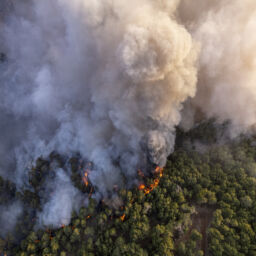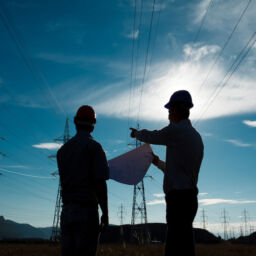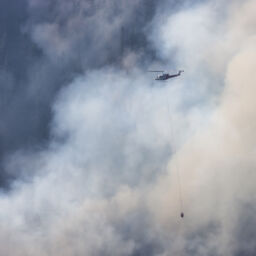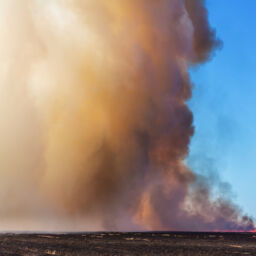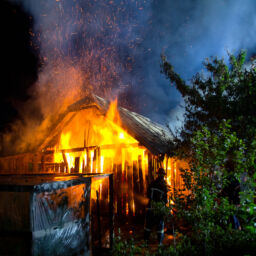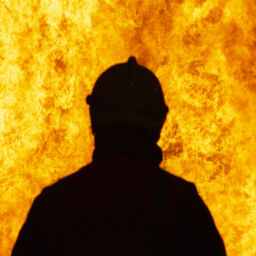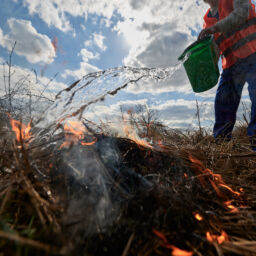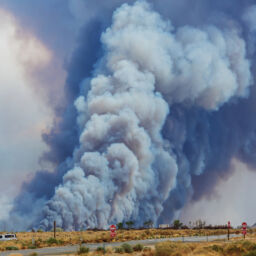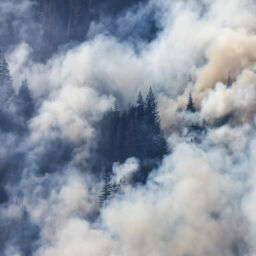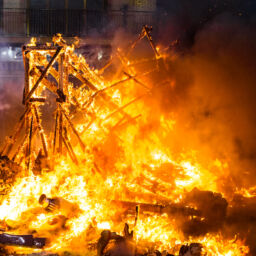In the aftermath of deadly wildfires in Hawaii lies a long and complicated recovery landscape. People in Maui and the town of Lahaina are already navigating mass death and displacement. A history of environmental injustice also means the community will have to deal with the residual effects of that history alongside the toxic chemicals left from the fires.
[…]
Wildfires on the scale of what happened in Hawaii not only wreak havoc on the immediate landscape but also leave behind a trail of toxic chemicals and materials that pose significant challenges to the long-term recovery of affected communities. The combustion of various materials during a wildfire generates a toxic mix of chemicals, releasing hazardous substances such as particulate matter, heavy metals (like lead or arsenic), volatile organic compounds and polycyclic aromatic hydrocarbons into the air.
These pollutants can linger long after the flames are extinguished, settling onto surfaces, soil and water bodies. Smoke plumes contain fine particles that can be inhaled deeply into the lungs, leading to respiratory problems and exacerbating existing health conditions. Moreover, the deposition of heavy metals and PAHs in the soil and water can contaminate these resources, posing risks to human health and the ecosystem.
What The Toxins Are And How To Clean Them Up
Leila Darwish, a disaster resilience and recovery specialist and the author of the book Earth Repair: A Grassroots Guide to Healing Toxic and Damaged Landscapes, explained, “when we have wildfires interact with man made structures, that’s where we see this toxic kind of impact. And so when you have a fire burnt through homes, burned through cars, power lines, garages full of different things,” she added, “those materials when they burn, if they had certain toxics or metals or things in them before, now that is reduced to ash.”
Darwish also explained that contamination can have negative impacts on the soil, water and the people who rely on these systems. Because cleanup of toxic materials can be complicated, that process often delays recovery and resilience-building work.
As an island chain, Hawaii is susceptible to rising sea levels. According to the Hawaii Climate Change Portal, it is one of the areas in the United States most vulnerable to rising seas. Without mitigation, there will be less space for people to occupy safely or at all.
There has long been a housing inequity problem in Lahaina, with soaring rent and property ownership costs displacing locals and native Hawaiians. The current housing crisis will not only be an issue in wildfire recovery, it has to be considered as part of a long-term disaster and climate mitigation plan. This means that Lahainians and those invested in the area’s recovery will have to contend with the prior harm and its impact on people’s ability to recover, alongside the toxic aftermath of the fires.
This is important in recovery because the aftermath of massive wildfires extends beyond charred landscapes and damaged infrastructure. Toxic chemicals and materials left in their wake introduce a myriad of challenges to the long-term recovery of affected communities. Comprehensive strategies that integrate environmental remediation, health interventions and social support systems are essential to ensure the holistic revival of communities devastated by wildfires.
As climate change intensifies the frequency and severity of wildfires, the choices made in the wake of Lahaina and the lessons we learn from those choices will inform how we approach climate-driven disasters going forward.
Full Story: Forbes September 11, 2023




